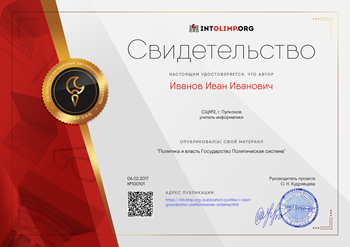Education
Pre-reading tasks
1. Work in groups of three or four and discuss the following:
- What is education?
- What does education include?
- Do all people have the right for education?
- Why is education divided into primary, secondary and higher?
Read and translate the text using a dictionary if necessary:
Text A. Education
Education encompasses both the teaching and learning of knowledge, proper conduct, and technical competency. It thus focuses on the cultivation of skills, trades or professions, as well as mental, moral & aesthetic development.
Formal education consists of systematic instruction, teaching and training by professional teachers. This consists of the application of pedagogy and the development of curricula.
The right to education is a fundamental human right. Since 1952, Article 2 of the first Protocol to the European Convention on Human Rights obliges all signatory parties to guarantee the right to education. At world level, the United Nations’ International Covenant on Economic, Social and Cultural Rights of 1966 guarantees this right under its Article 13.
Educational systems are established to provide education and training, often for children and the young. A curriculum defines what students should know, understand and be able to do as the result of education. A system of policies, regulations, examinations, structures and funding enables teachers to teach to the best of their abilities. Sometimes educational systems can be used to promote doctrines or ideals as well as knowledge, which is known as social engineering. This can lead to political abuse of the system, particularly in totalitarian states and government.
Primary (or elementary) education consists of the first years of formal, structured education. In general, primary education consists of six or seven years of schooling starting at the age of 5 or 6, although this varies between, and sometimes within, countries. Globally, around 70% of primary-age children are enrolled in primary education, and this proportion is rising.
In most contemporary educational systems of the world, secondary education consists of the second years of formal education that occur during adolescence. It is characterized by transition from the typically compulsory, comprehensive primaryeducation for minors, to the optional, selective tertiary, “post-secondary”, or “higher” education (e.g., university, vocational school) for adults.
Higher education, also called tertiary, third stage, or post-secondary education, is the non-compulsory educational level that follows the completion of a school providing a secondary education, such as a high school or secondary school. Tertiary education is normally taken to include undergraduate and postgraduate education, as well as vocational education and training. Colleges and universities are the main institutions that provide tertiary education. Collectively, these are sometimes known as tertiary institutions. Tertiary education generally results in the receipt of certificates, diplomas, or academic degrees.
After reading tasks
3. Complete the sentences about the text:
1) A definition of education includes:
a. the process of teaching,
b. the process of teaching and learning
2) Everywhere in the world children go to primary schools:
a. at the same age
b. the age may differ.
3) Tertiary education refers to:
a. primary education,
b. secondary education,
c. post-secondary education.
4) Tertiary education is:
a. optional.
b. compulsory
4. Match the words with their definitions:
| № | Words | Definitions | |||
| 1 | Formal education | A | involves learning and studying for academic or professional degrees or other qualifications for which a first or bachelor's degree generally is required, and it is normally considered to be part of higher education. | ||
| 2 | Postgraduate education | B | consists of the first years of formal, structured education. | ||
| 3 | Primary education | C | results from a program of instruction in an educational institution leading to a qualification / certification. | ||
| 4 | Secondary education | D | education conducted after secondary education and prior to post-graduate education. It typically includes all the academic programs up to the level of a bachelor's degree. | ||
| 5 | Undergraduate education | E | is the stage of education following primary education. | ||
| 6 | Informal education | F | refers to the whole range of educational activities taking place in various settings , that aim to meet basic learning needs. | ||
| 7 | Non-formal education | G | occurs in daily work, leisure or family. | ||
| 8 | Basic education | H | results from a program but it is not usually evaluated and doesn't lead to certification. | ||
| 9 | Higher education | I | is the non-compulsory educational level that follows the completion of a school providing a secondary education, such as a high school, secondary school. | ||







